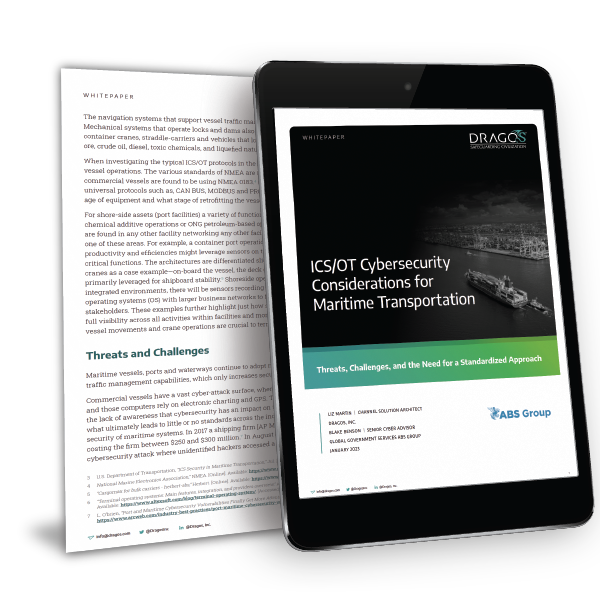Commercial maritime vessels, ports, and waterways are a prime target for cyber adversaries, with 90% of global trade being conducted via shipping. Commercial vessels have a vast cyber-attack surface, where the engines of these vessels are controlled by computers and those computers rely on electronic charting and GPS. Vessels, ports, and waterways are rapidly adopting new technology to improve GPS, propulsion, safety, and traffic management capabilities, introducing new security risks without the benefit of comprehensive cybersecurity standards and guidelines.
Dragos and the ABS Group have released a new, complimentary white paper to help owners and operators of maritime systems understand how cybersecurity impacts equipment, processes, and the mission of enabling global trade in a safe and secure way.
Written by industry experts, the white paper covers:
- Cybersecurity threats unique to the industry
- Critical assets found in a typical maritime installation
- ICS/OT protocols found within the marine transportation ecosystem
- The challenges of delivering repeatable, effective training to crews that are often temporary
- Compliance, regulatory, and standards developments

